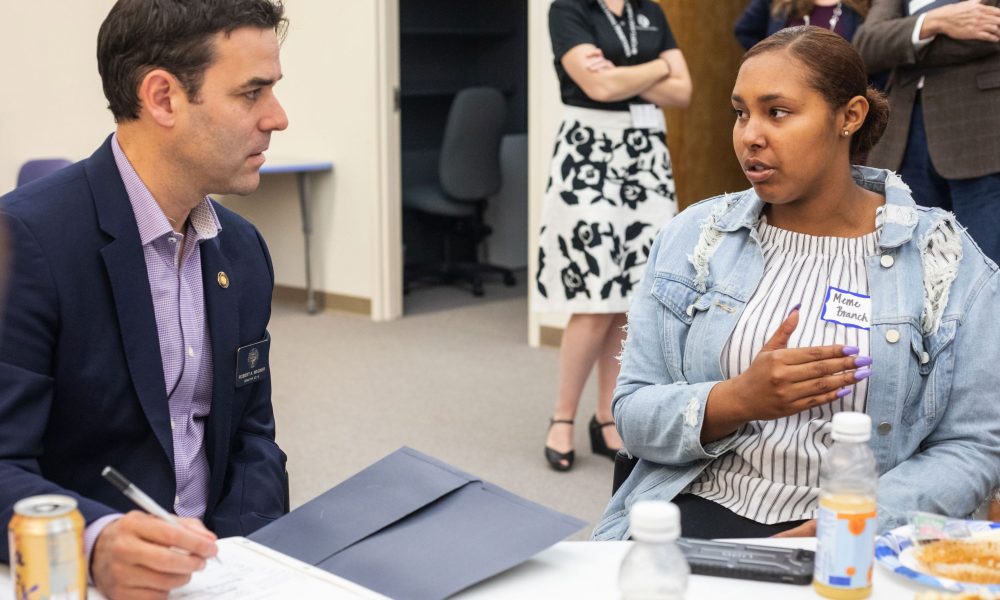
Meme Branch talks about her high school experience with state Sen. Rob Wagner during a Joint Legislation Committee on School Success town hall earlir this year. (Pamplin Media Group/Jonathan House)
SALEM — In an effort to put more Oregon students on track to graduate, the Legislature’s Joint Committee on School Success has proposed everything from expanding access to preschool to expanding the school year to 180 days.
The committee’s wish list of education reforms totaled 50 and together cost more than $3 billion, according to rough estimates by the Legislative Fiscal Office. “It just illustrates the need that is out there,” said Rep. Julie Fahey, D-Eugene.
Committee leaders will draft a report on the recommendations by the first day of the legislative session, which begins Jan. 22, said Committee Co-Chair Sen. Arnie Roblan, D-Coos Bay. The report will provide a foundation for later developing policies, a cost containment plan and a spending plan to improve graduation rates and school attendance — measures where Oregon lags behind most of the nation.
The committee is unlikely to offer a legislative spending package equal to that amount. “We are going to really quickly have to start thinking about how to prioritize all of the things on this spreadsheet,” Fahey said. “My prioritization personally is going to be what has the biggest bang for buck in terms of increased student outcomes … and then what is the best return on investment for our taxpayer dollars.”
Investment in early learning typically delivers the strongest results in overall educational outcomes, said Michael Griffith of the Education Commission of the States who spoke to the committee Thursday night, Dec. 13.
Sen. Kathleen Taylor, D-Portland, pushed back on the idea of prioritizing the recommendations.
“If we want to see the outcomes, I don’t see how we are going to have these great improvements without doing basically all of this,” Taylor said.
Rep. Greg Smith, R-Heppner, said the committee needs to craft a long-term vision for what it wantsa prized educator and prized student to look like and draft legislation to gradually accomplish that goal.
Some of the reforms, such as decreasing the ratio of guidance counselors (and school nurses) and decreasing classes sizes, would have to be phased in, and not just for financial reasons. Many of the professionals in those fields already are in short supply, and officials might have to wait to recruit or grow graduates in those fields, said Doug Wilson, chief analyst in the Legislative Fiscal Office. Meanwhile, decreasing class sizes would require construction of new classrooms at some schools, which takes time, he said.
The reforms would cost money. For example, increasing Oregon’s average 170-day school year to 180 days would cost about $516 million every two years. Reducing class sizes to 20 students in kindergarten and first grade, 23 in second and third, 24 in fourth and fifth and 29 in core middle and high school classes would cost about $370 million.
Expanding access to behavioral and physical health services by increasing school nurses to 1 for every 750 would cost $126 million. Increasing the counselors to one per 250 students would cost $238 million. The actual cost would probably be more after further analysis, Wilson said.
The 14-member committee toured the state for about seven months to hear ideas and opinions from teachers, students, parents and other on best educational practices and student and teacher needs. During that time, the panel visited about 50 schools and other educational facilities.
Paris Achen: [email protected] or 503-506-0067. Achen is a reporter for the Portland Tribune working for the Oregon Capital Bureau, a collaboration of EO Media Group, Pamplin Media Group and Salem Reporter.









